At the edge of the Braunton Burrows, one of the largest dunescapes in England, is Saunton Golf Club, home of 36 holes of links golf. While both courses are typically ranked in the UK top 100, it’s the East Course that is considered the championship course. It’s often said that this is course is at the top of the list of links courses that haven’t but could host the Open Championship. While I haven’t played all of the contenders, this would certainly be a suitable venue—it’s challenging without being too quirky and there’s a ton of room around the course for tournament infrastructure.
While the challenging-without-being-quirky aspect would be a plus for this course in holding the Open Championship, it was the reason why the course didn’t do as well in my estimation as some of the other links courses in west England/Wales like Pennard, Royal North Devon, and St. Enodoc: it’s pretty straightforward. That’s not to say that it isn’t an interesting and excellent course. It is; in fact, the greens, while a bit modern-looking in contour are one of the most interesting (and consistent) sets on any course that I played in England.
But unlike most links courses, many of the fairways lack the interesting small contours of my favorite links courses like Royal St. George’s and Royal Cinque Ports. Apparently the course was used for military training in WWII and the fairways became flatter as a result. Saunton East felt more like a parkland course in a links setting to me. Part of this was due to the fact that 2016 had been a wet spring across England and the fairways were not firm. This was puzzling to me because we had played Royal North Devon, which is just to the south the day before and those fairways were very firm. But I don’t think that that’s the club’s fault because it’s not like they’re irrigating their fairways.
The East Course starts with perhaps its most difficult hole: a >470 yard par 4. Despite perhaps being a bit too strong a jolt of difficulty, it’s a very good hole. The major feature is a big hill on the right with a single bunker but this is only about a 200 yard carry. Still, you want to keep your drive up the right side because it gives you an angle straight down the deep, but narrow green. The green is the first of many excellent ones.
While the challenging-without-being-quirky aspect would be a plus for this course in holding the Open Championship, it was the reason why the course didn’t do as well in my estimation as some of the other links courses in west England/Wales like Pennard, Royal North Devon, and St. Enodoc: it’s pretty straightforward. That’s not to say that it isn’t an interesting and excellent course. It is; in fact, the greens, while a bit modern-looking in contour are one of the most interesting (and consistent) sets on any course that I played in England.
But unlike most links courses, many of the fairways lack the interesting small contours of my favorite links courses like Royal St. George’s and Royal Cinque Ports. Apparently the course was used for military training in WWII and the fairways became flatter as a result. Saunton East felt more like a parkland course in a links setting to me. Part of this was due to the fact that 2016 had been a wet spring across England and the fairways were not firm. This was puzzling to me because we had played Royal North Devon, which is just to the south the day before and those fairways were very firm. But I don’t think that that’s the club’s fault because it’s not like they’re irrigating their fairways.
The East Course starts with perhaps its most difficult hole: a >470 yard par 4. Despite perhaps being a bit too strong a jolt of difficulty, it’s a very good hole. The major feature is a big hill on the right with a single bunker but this is only about a 200 yard carry. Still, you want to keep your drive up the right side because it gives you an angle straight down the deep, but narrow green. The green is the first of many excellent ones.
The par 5 second hole was, from the tees that I played (~480), one of the toughest driving holes that I’ve seen. First, there are two bunkers about on the right about 240 out. Second and more important, a burn is piped under the fairway at ~255 but is exposed both left and right, leaving either a layup or a drive threaded through about a 30 yard gap. It would have been easier if I had just moved to the back tees. The green is fairly generic, built on a plateau at the base of a dune.
The bunkerless 400 yard par 4 third is one of the course’s best although it also illustrates what was, for me, the course’s primary drawback: the fairway is surrounded by dunes, yet is fairly flat. Still, the dunes make for a challenging drive and the approach shot becomes a bit easier if you carry the dunes on the left. The approach to the narrow deep green isn’t the most interesting but the green is outstanding.
Four is a longer par 4 with a very interesting drive. While the fairway is wide, unless you’re in the left third of it, your approach will be blind over a large dune about 250 from the back tees. At that point, the fairway enters a narrowing gap between this dune and several bunkers on the left. The green is large and receptive.
Five is a very short par 3 to another wavy and, to my mind, modern-looking green. But it’s none the worse for that.
The par 4 sixth is probably the dullest hole on the course, playing across flat land. While there’s a burn running along the fairway on the right, there’s no trouble if you cut the dogleg up the left side. The 430 yard seventh also plays across flat land but is much more interesting, with bunkers on the left at ~245 and 270 and a large, well-defended green with outstanding contour.
Like number three, the medium-length par 4 eighth showcases the strengths and weaknesses of the East Course. The drive is the course’s quirkiest; completely blind over abrupt dunes just in front of the tee. But the fairway is very wide and flat. I like it when blind shots play to forgiving landing areas, but this one crosses the line between forgiving and dull. But then the second shot is very interesting, with the green in a dell surrounded by dunes.
Although I’m not sure how many would share my view, I thought that the medium-length par 4 ninth was the course’s best. The key driving feature here is a bunker on the right side of the fairway about 280 yards from the tips.
The brilliance of this hole has to do with the angle/contours of the green and how these structure the best way to play the hole. The hole doglegs slightly left at the aforementioned bunker and the green angles from front-right to back-left behind a bunker and dunes. Unless you drive your ball to the outside of the dogleg, near this bunker, you’ll have a poor view of the green and awkward angle. The green is also the course’s best, with a high front-right shoulder, lower middle, and tier in the back. It’s narrow and will be very difficult to hit if you’re coming at it from the left side of the fairway. Altogether one of the best ninth holes that I’ve played (just below Swinley Forest’s) and probably one of England’s best mid-length par 4s.
The brilliance of this hole has to do with the angle/contours of the green and how these structure the best way to play the hole. The hole doglegs slightly left at the aforementioned bunker and the green angles from front-right to back-left behind a bunker and dunes. Unless you drive your ball to the outside of the dogleg, near this bunker, you’ll have a poor view of the green and awkward angle. The green is also the course’s best, with a high front-right shoulder, lower middle, and tier in the back. It’s narrow and will be very difficult to hit if you’re coming at it from the left side of the fairway. Altogether one of the best ninth holes that I’ve played (just below Swinley Forest’s) and probably one of England’s best mid-length par 4s.
The short par 4 tenth plays to a wide, flat fairway which should be easy to hit. Unfortunately I pulled my layup to the left and it was my first introduction to the spiky sea rush grass. I saw this grass on several British courses in marshy areas, but it was most prevalent here and at neighboring Royal North Devon (where one hole plays through a thicket of it). You don’t want to go searching for your ball in this stuff, which will slice up your hands with its serrated edges and blind you with its spiked tips.
The green is elevated with a false front and two bunkers short.
The green is elevated with a false front and two bunkers short.
Eleven is another short par 4 that probably gets the most accolades of all of the course’s holes. While the fairway is flat and the view from the tee a bit dull, there’s a lot of trouble out there. The course boundary line, demarcated by a burn, cuts into the fairway at 250. There are two bunkers on the left just short of this.
I’m not as big a fan of this hole as others because I don’t see any reason to take on the risk of driving it between the bunkers and the boundary line. You can easily layup to about 125 which, as long as you’re not too far right in the fairway, leaves an open view to a green that is fairly large. The front right of the green comes to the edge of the burn and if the flag is there, a little more left in the fairway is preferable. It’s a very good hole, but I preferred the more contour/angle-driven ninth.
I’m not as big a fan of this hole as others because I don’t see any reason to take on the risk of driving it between the bunkers and the boundary line. You can easily layup to about 125 which, as long as you’re not too far right in the fairway, leaves an open view to a green that is fairly large. The front right of the green comes to the edge of the burn and if the flag is there, a little more left in the fairway is preferable. It’s a very good hole, but I preferred the more contour/angle-driven ninth.
Twelve is another medium-length (~410) par 4 playing across flat land although there are bushes just left of the fairway and thick grass right, so it demands accuracy. I remember the green as being interesting but apparently it wasn’t interesting enough for me to take a picture of it.
Thirteen is a ~160 yard par 3 to an elevated and wavy green. This was the green where I remember thinking for the first time how modern the broad, sweeping contours on the greens looked. But again, while this might be different than on other links courses, where the best greens are created by small scale random ridges and bumps, it’s a great strength of the course.
Fourteen is a very difficult par 4. Very long (>450) and very narrow with two bunkers on the right just where you’d like to drive it. But the narrow approach to the green and the greensite are very attractive.
Fifteen is a short par 5 with a wide fairway but you still have to be careful here—there’s a burn that runs diagonally along the fairway on the left and if you pull your drive, it’s easy to reach. The fairway is also interrupted by mounds about 280 from the standard tees. While the visibility up the right side of the fairway is poorer, it’s best to aim here. The approach is to an elevated green well-guarded by two bunkers.
Sixteen is a long and awkward but very good par 4 that begins an excellent closing stretch. This is one of the tougher drives that I’ve ever seen because (1) the visibility from the tee is poor and (2) the fairway has a reverse camber, doglegging left but sloping to the right. There are two bunkers on the right starting at about 260 from the regular tees and it is very easy to run into these. But it’s difficult to get yourself to aim left because the further left you aim, the less you can see.
The approach to the green is also blind because the green is in a dell on the edge of the dune ridge on the left. I judged (I think correctly) that there was too much risk in trying to hit driver off the tee but if you lay back here, you’ll have a very long second. It’s pretty hard to take fewer than 5 shots on this hole.
Seventeen is an excellent ~200 yard par 3 that gives you ample room to run the ball onto the green. I think that one of the reasons that I liked this hole so much is that the land here is much bumpier than most of that across the rest of the the course, something that I really like in a links.
Speaking of links (or really British) course features, the drive on the mid-length par 4 eighteenth plays mostly blind across the back edge of the seventeenth green. This is another tough driving hole, with the fairway narrowing between dunes on the right and three bunkers on the left starting ~230 out. From here, the hole turns right and heads uphill to a green guarded by 5 bunkers just below the clubhouse’s back patio.
Thinking back over the East Course, I’m remembering it a bit more fondly than how I thought of it at the time. I had played it just after I played Burnham and Berrow and felt a very clear preference for the latter at the time. The main reason was that I didn’t like how flat most of the East’s fairways were and felt that Burnham’s were more what I liked in a links, with lots of random small bumps and ridges.
But reflecting on it a few years later, the strengths of the East stand out a little more. The main strength is the greens, which I would have acknowledged at the time constitute one of the best sets on any course that I had played in England. Even on the links courses with the best sets of greens like Royal St. George’s and Royal Cinque Ports, only a half dozen or so of the greens were really interesting and the rest were fairly modest. That’s not true here—most of the greens are interesting and while as I’ve mentioned they’re a bit different in style than other links courses, they’re none the worse for that.
I think that I also prefer the shaping on Saunton’s East Course to much of that on Burnham and Berrow. Both Burnham and the East were originally designed by Herbert Fowler but were heavily reworked, Burnham by Colt and Alison, the East by CK Cotton. Despite the bigger names of the former, I think that Cotton did a better job (or at least one more to my liking) with the greens here. In addition to the contours, the green sites are well-chosen and well-shaped. Many rest simply on the ground with interesting interior contours, like Fowler’s remaining greens at Burnham and at Walton Heath. I supposed that my preference for these simpler green complexes over Colt’s more heavily shaped ones is just that rather than based on some objective truth about quality. But I do believe that in beautiful, natural settings like true linksscape, the architect should put in a little extra effort to try to work in and around the bounty that was given to them, rather than build their own thing upon it.
But reflecting on it a few years later, the strengths of the East stand out a little more. The main strength is the greens, which I would have acknowledged at the time constitute one of the best sets on any course that I had played in England. Even on the links courses with the best sets of greens like Royal St. George’s and Royal Cinque Ports, only a half dozen or so of the greens were really interesting and the rest were fairly modest. That’s not true here—most of the greens are interesting and while as I’ve mentioned they’re a bit different in style than other links courses, they’re none the worse for that.
I think that I also prefer the shaping on Saunton’s East Course to much of that on Burnham and Berrow. Both Burnham and the East were originally designed by Herbert Fowler but were heavily reworked, Burnham by Colt and Alison, the East by CK Cotton. Despite the bigger names of the former, I think that Cotton did a better job (or at least one more to my liking) with the greens here. In addition to the contours, the green sites are well-chosen and well-shaped. Many rest simply on the ground with interesting interior contours, like Fowler’s remaining greens at Burnham and at Walton Heath. I supposed that my preference for these simpler green complexes over Colt’s more heavily shaped ones is just that rather than based on some objective truth about quality. But I do believe that in beautiful, natural settings like true linksscape, the architect should put in a little extra effort to try to work in and around the bounty that was given to them, rather than build their own thing upon it.
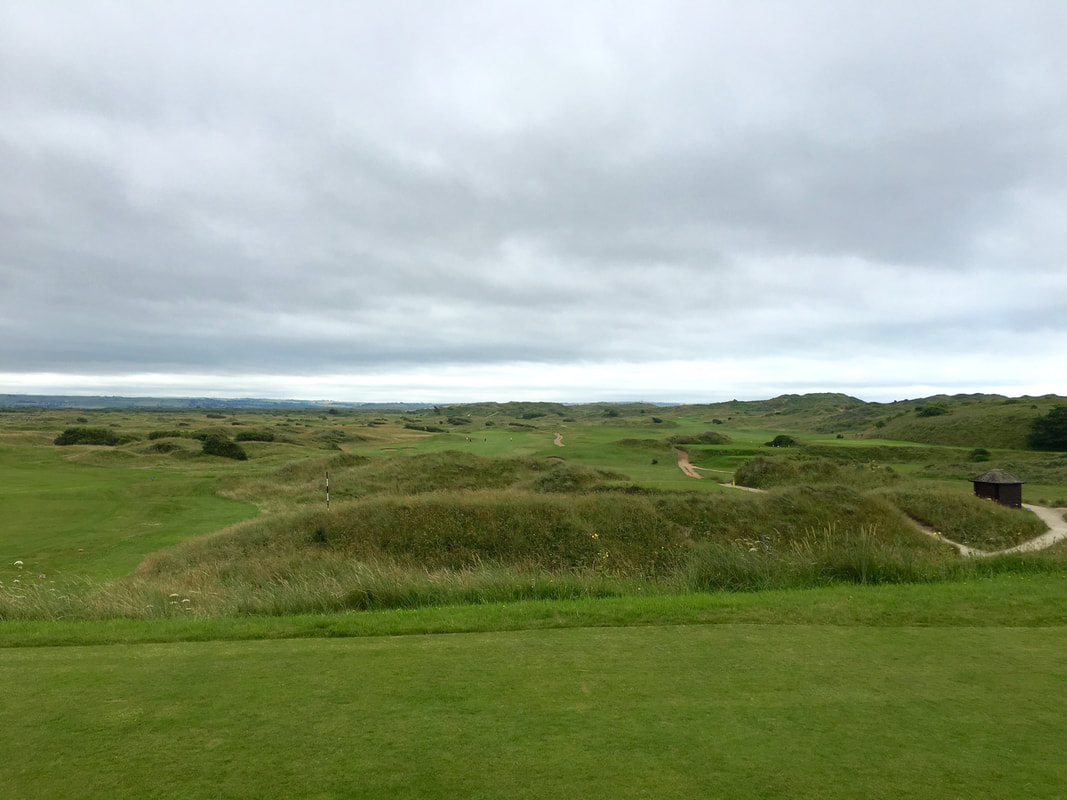
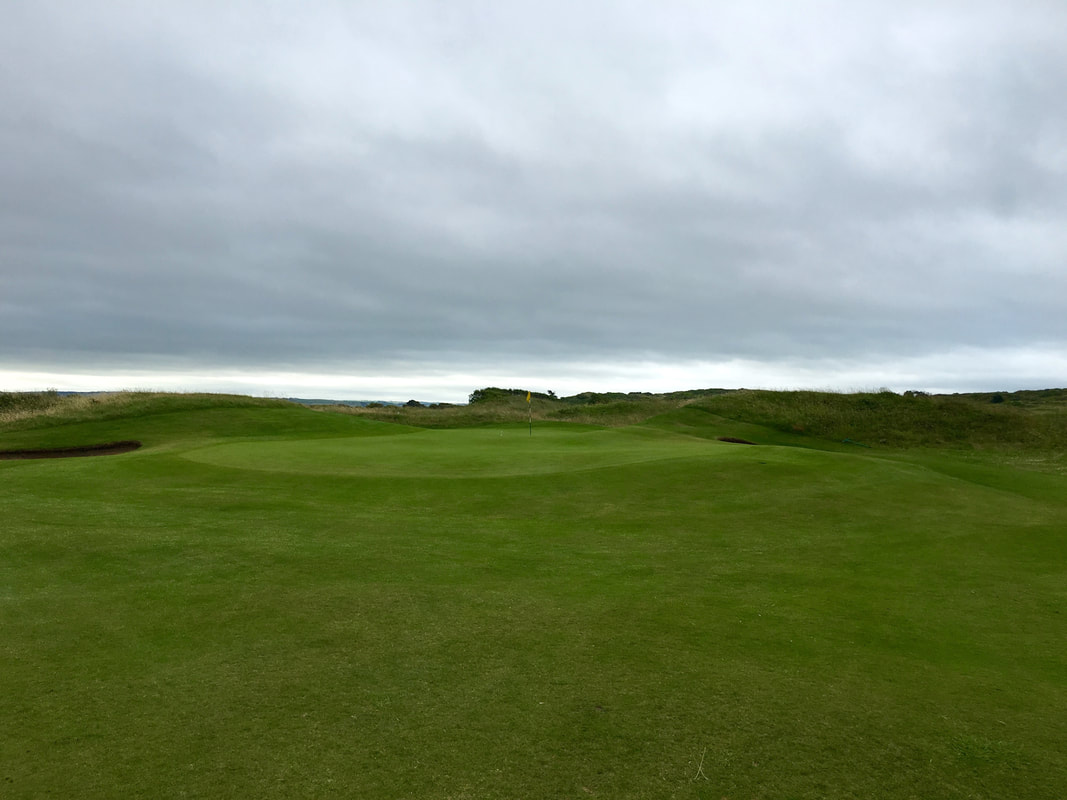
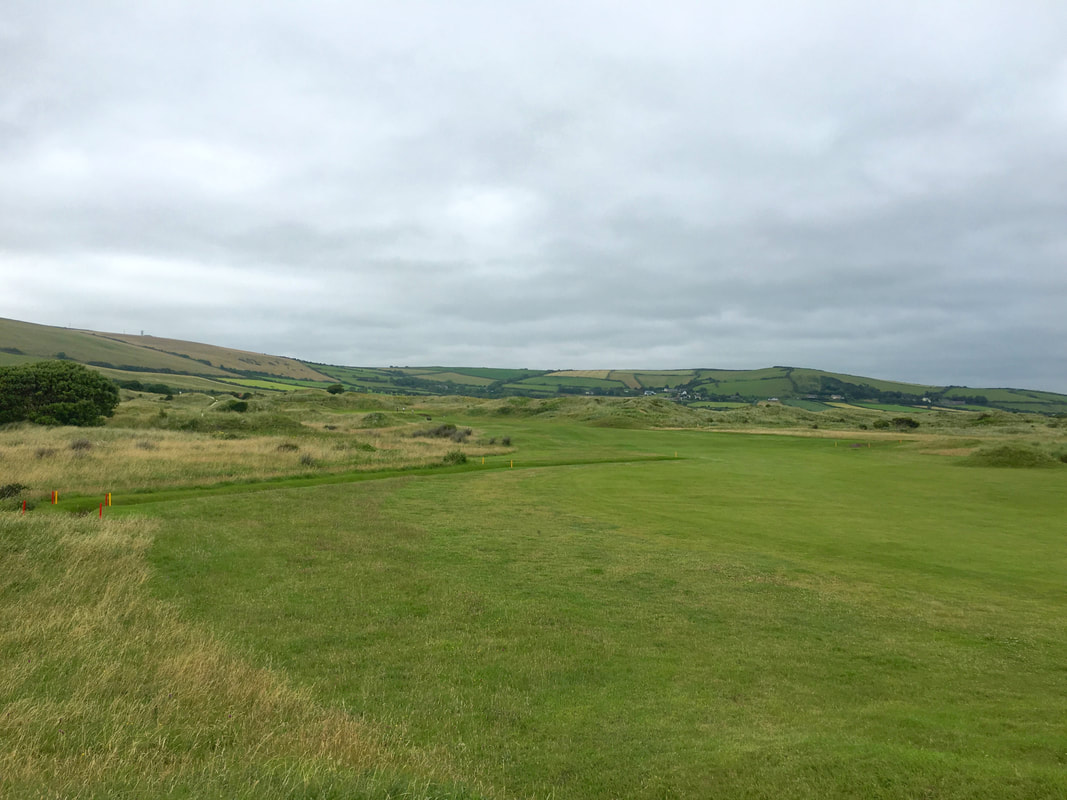
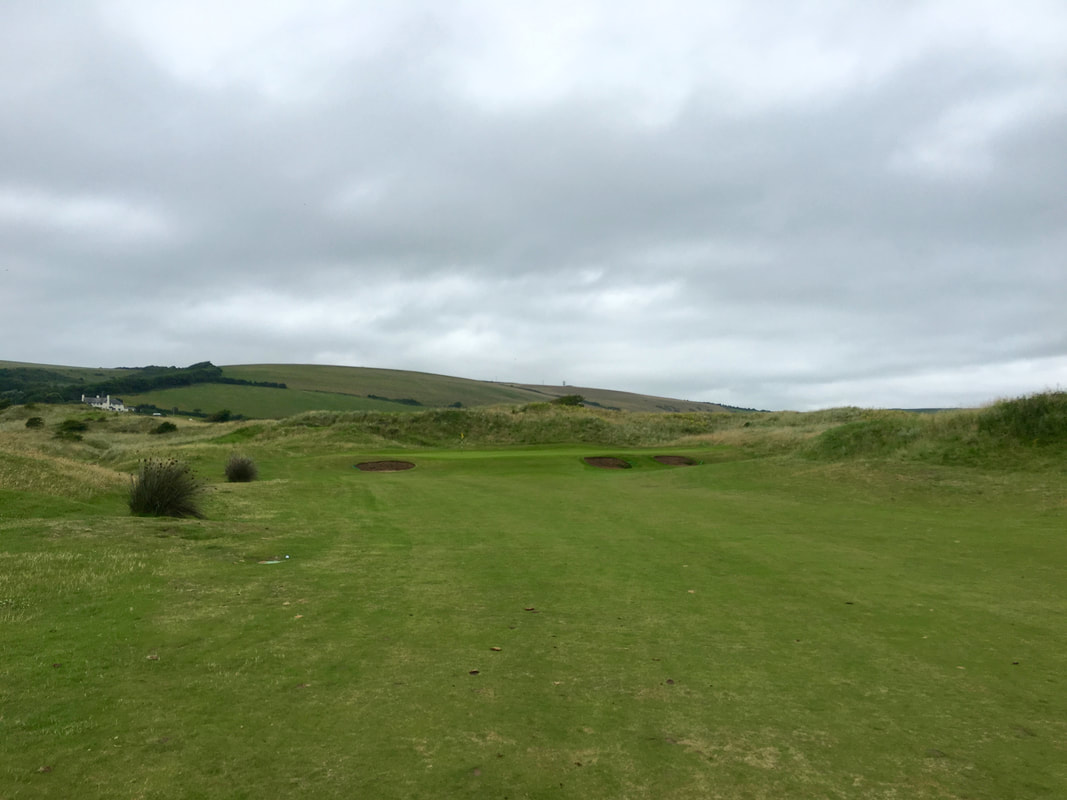
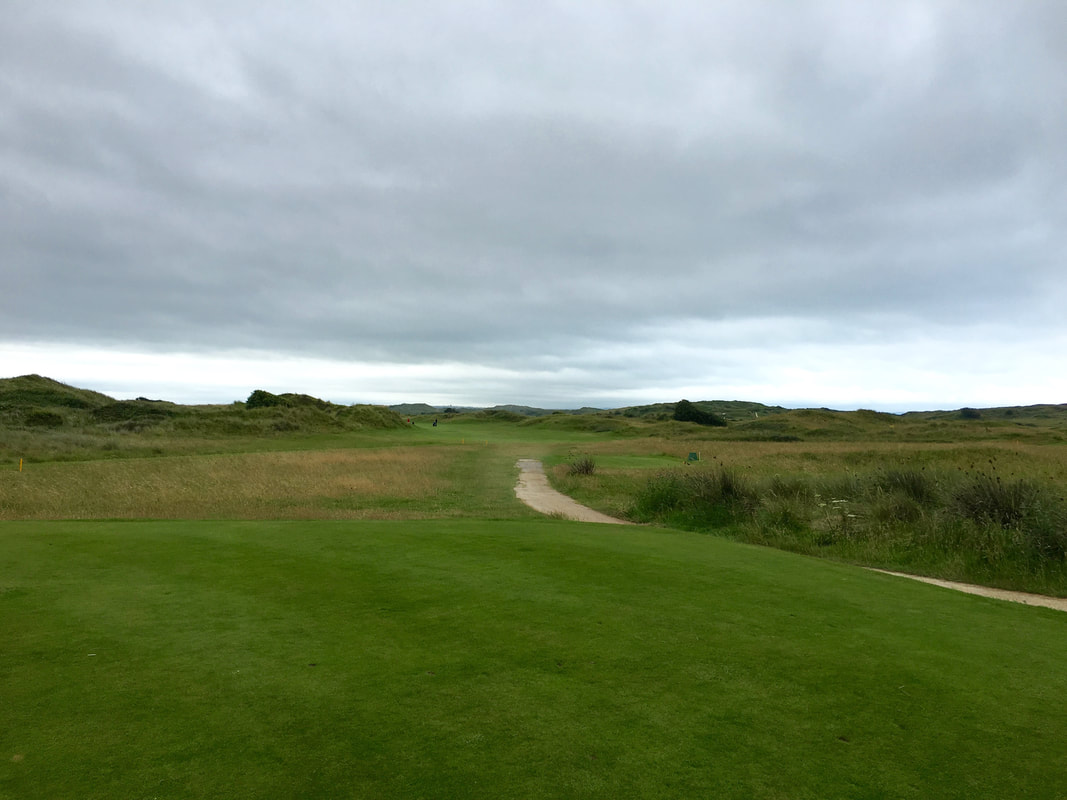
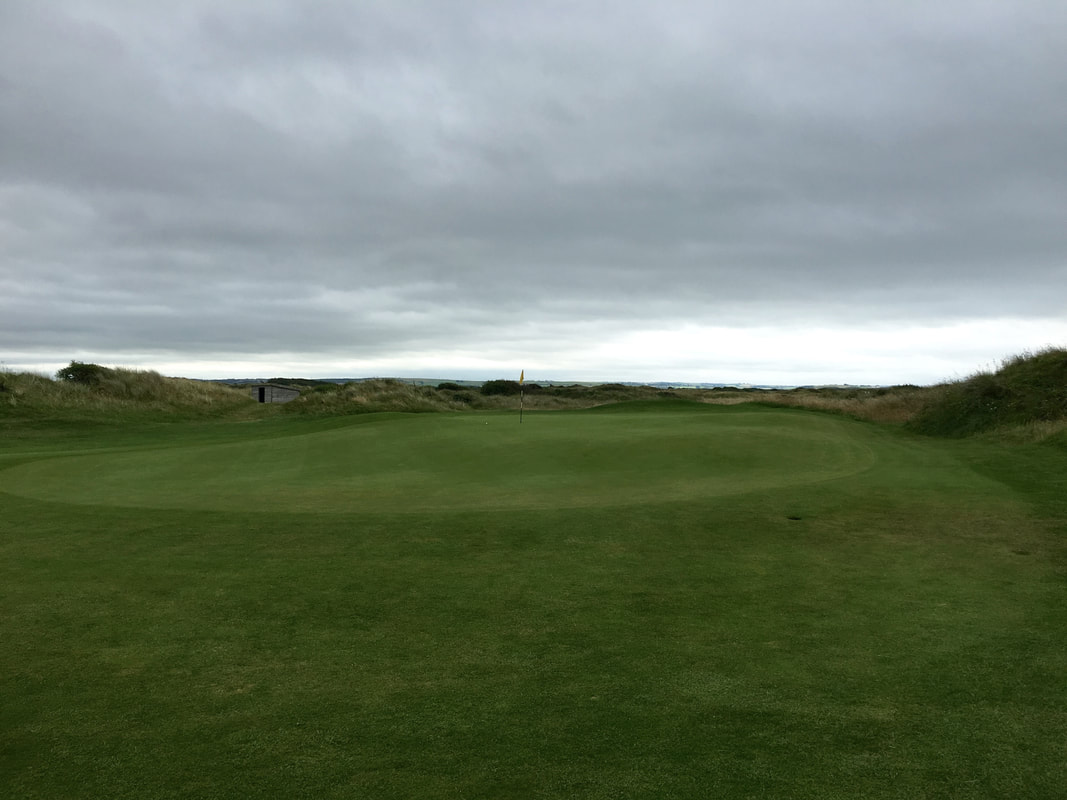
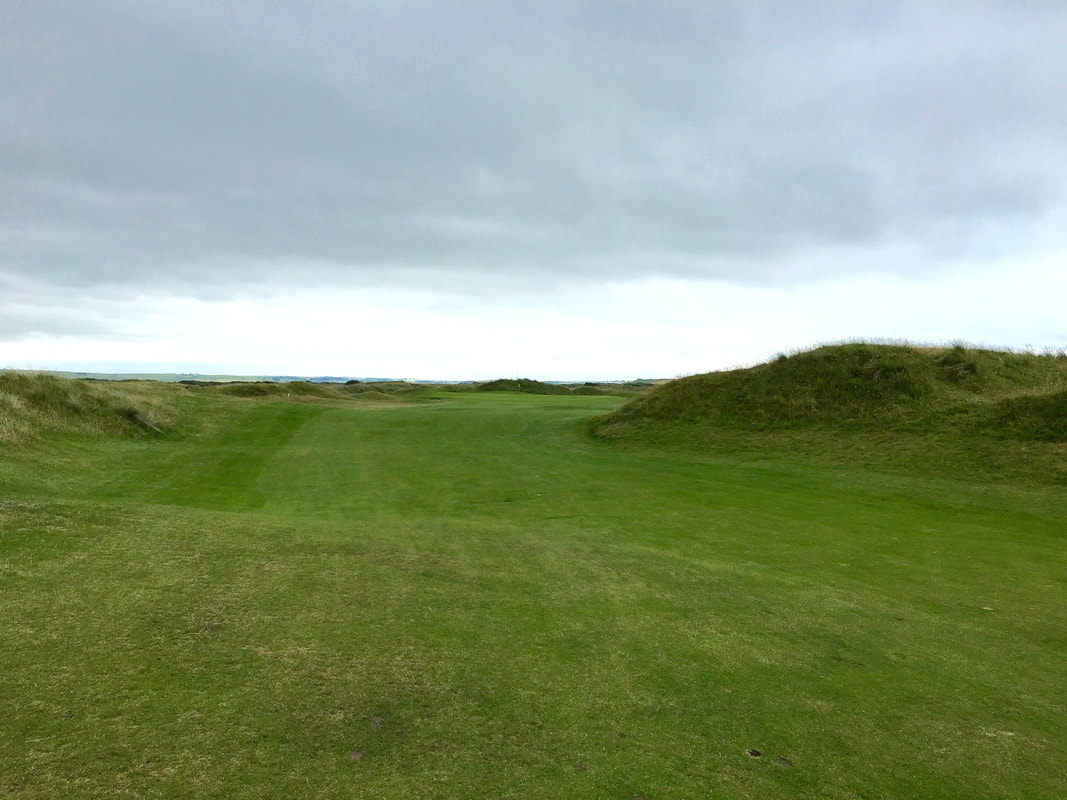
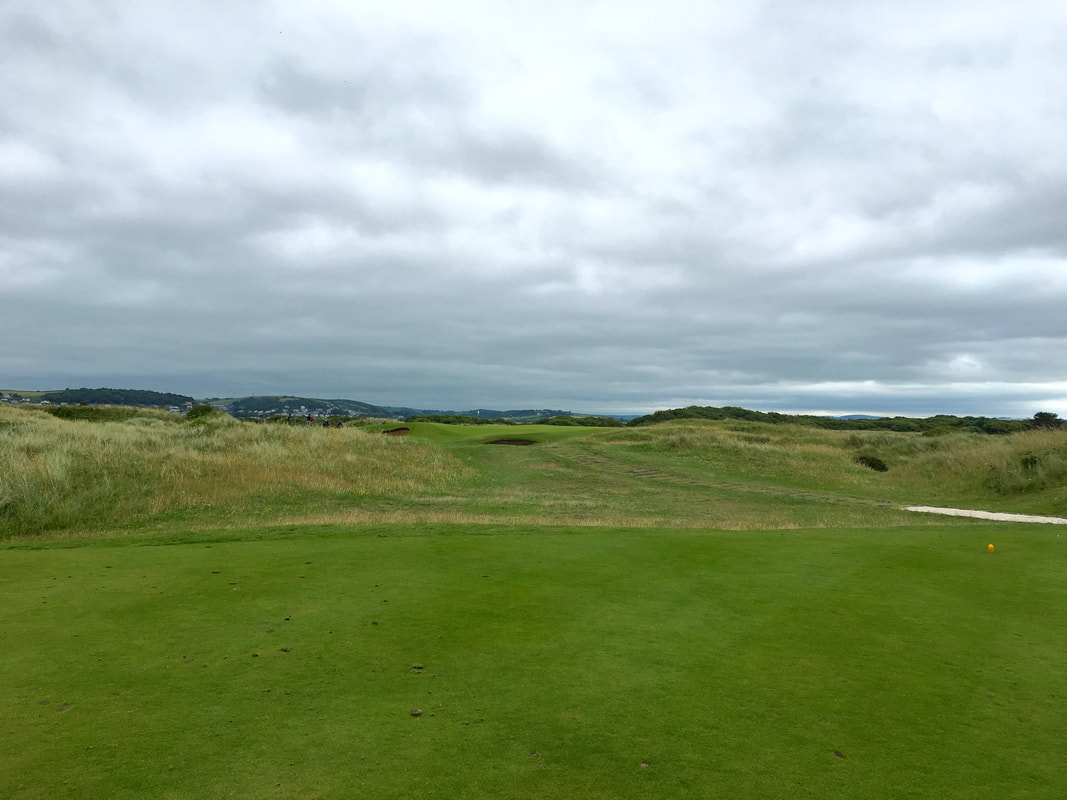
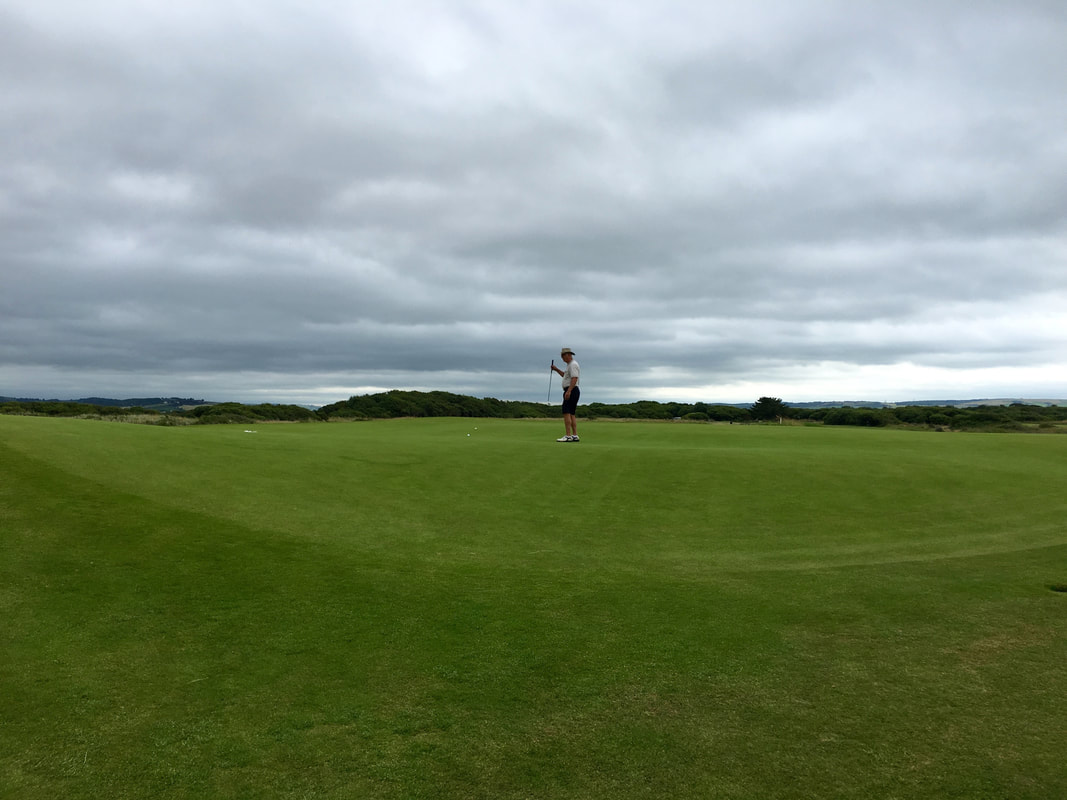
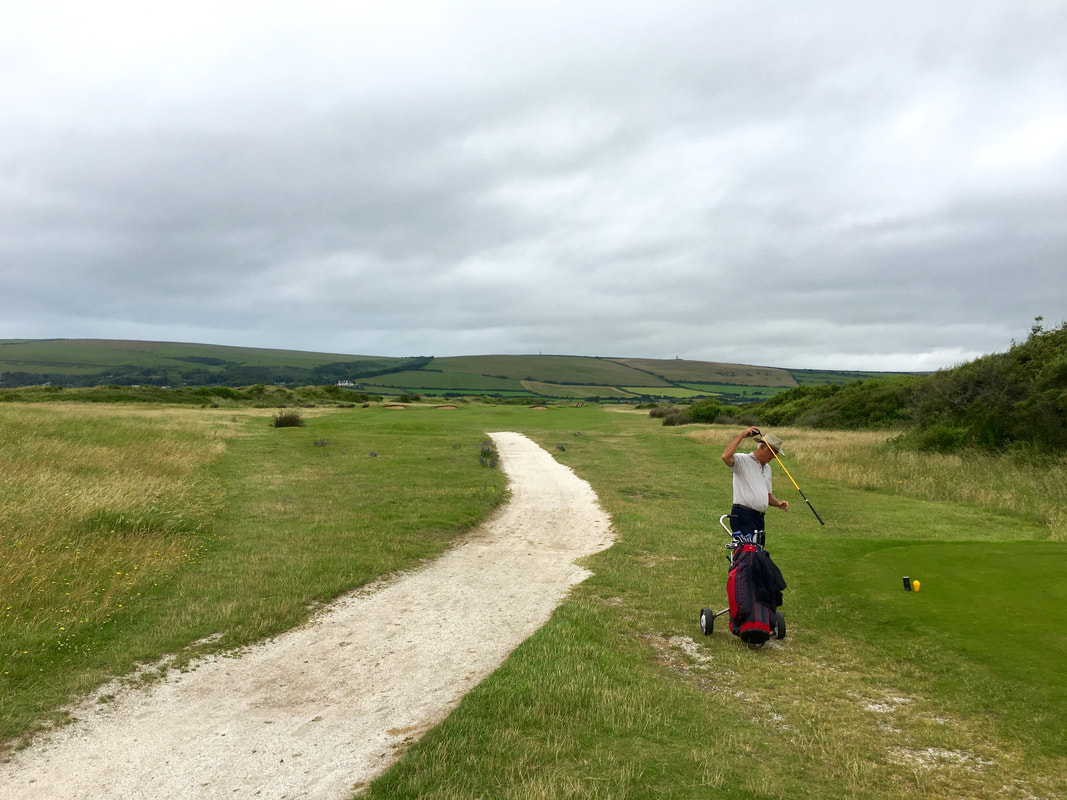
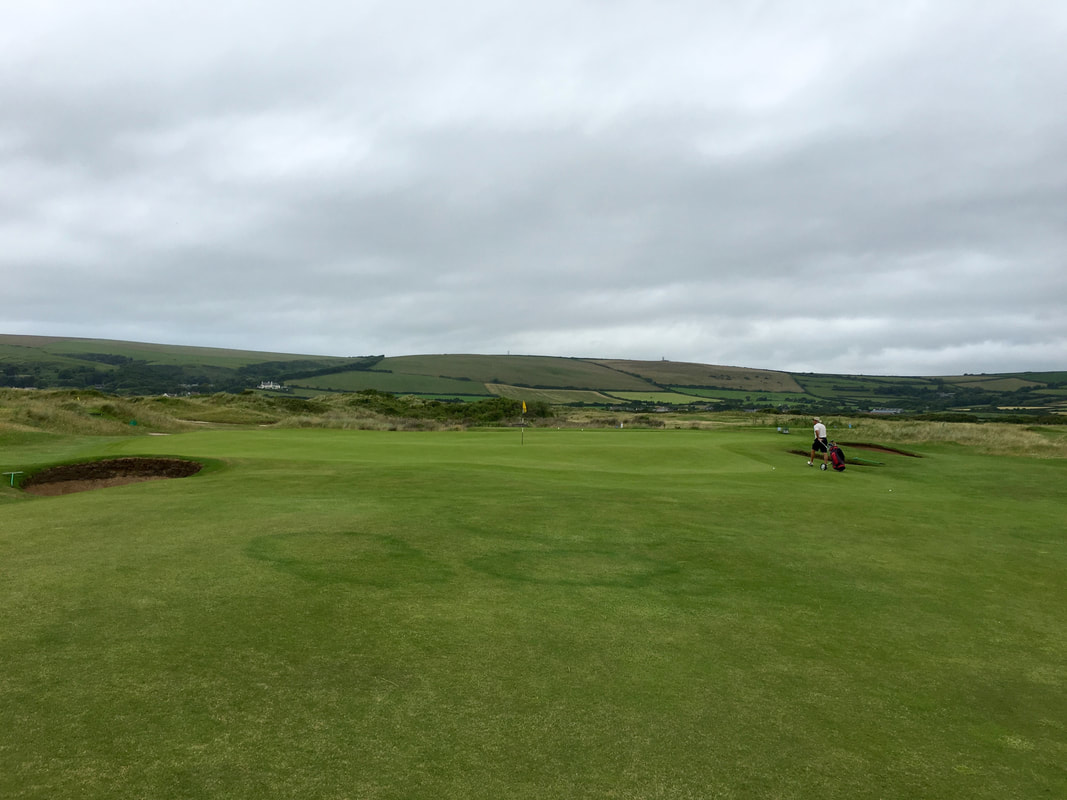
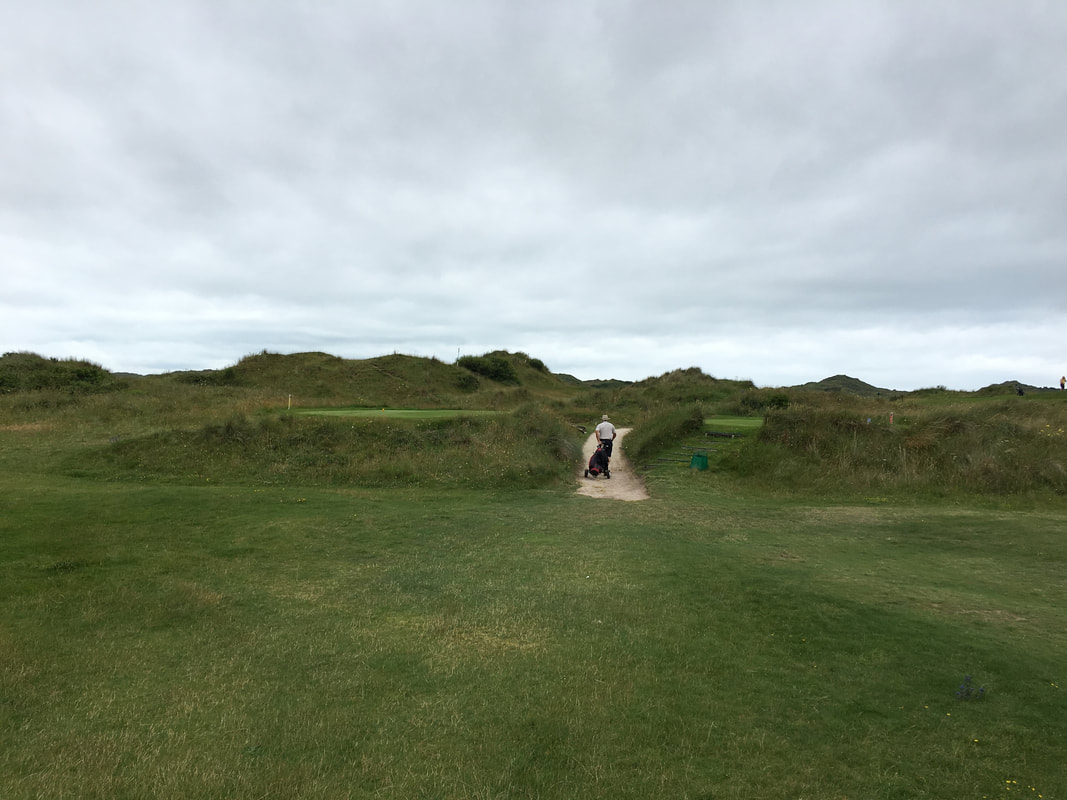
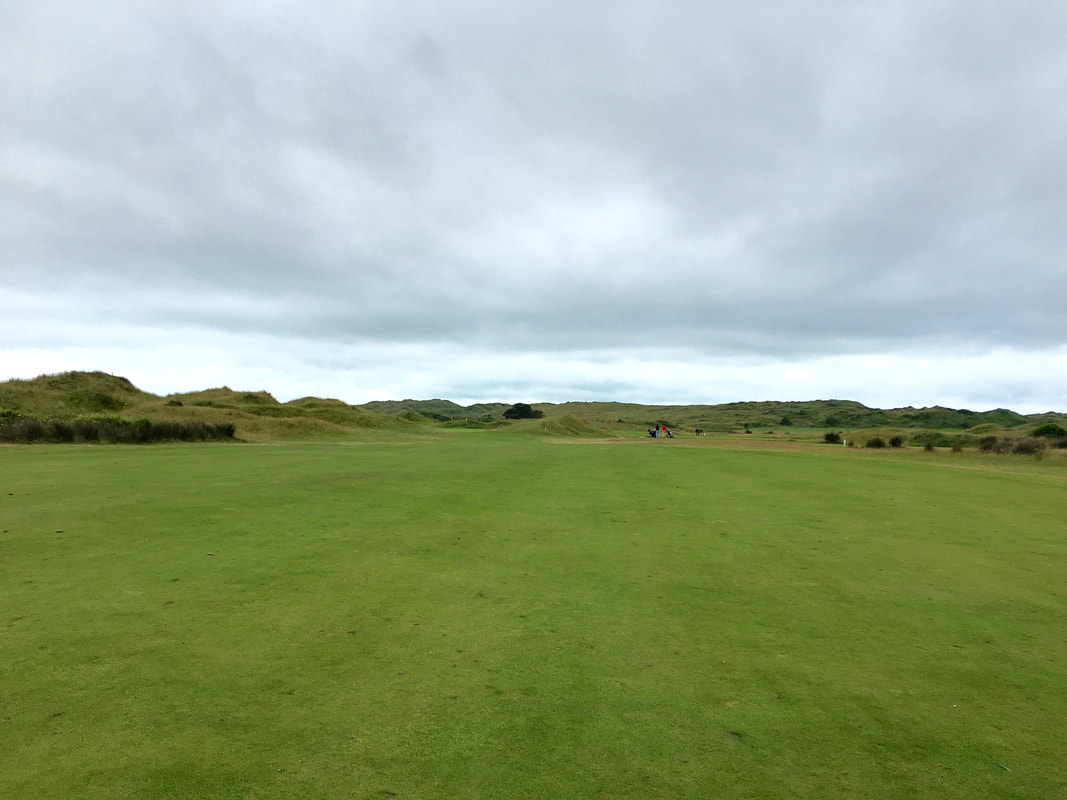
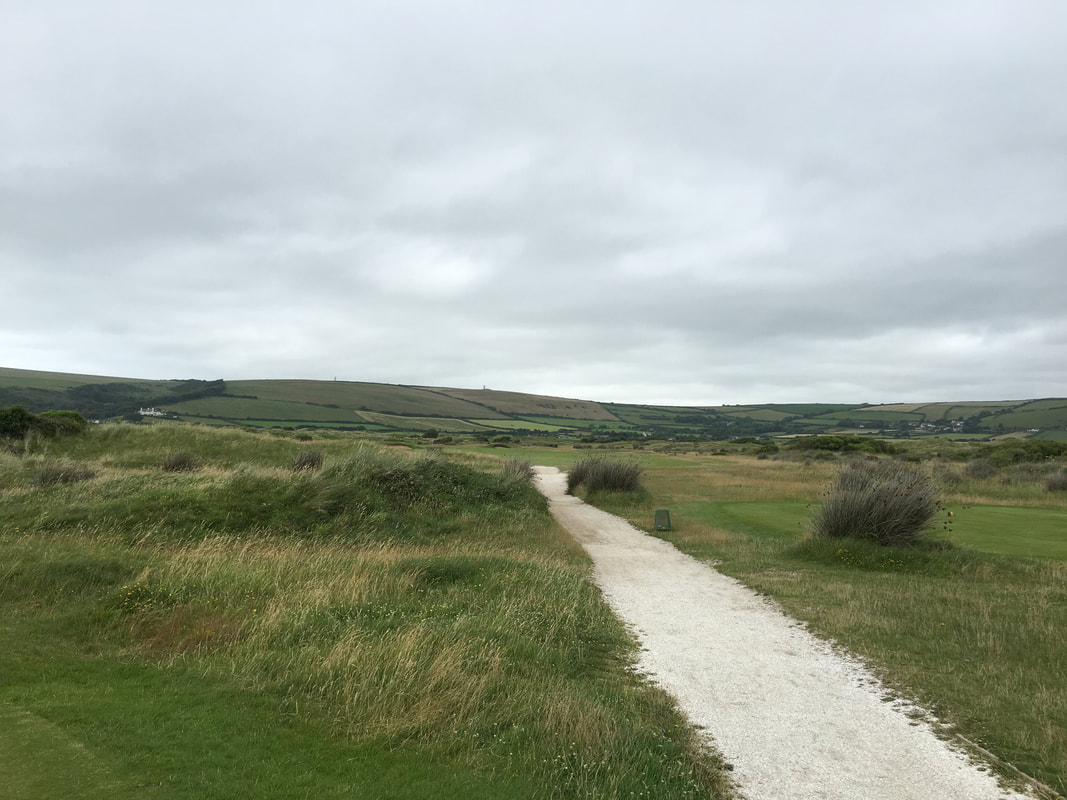
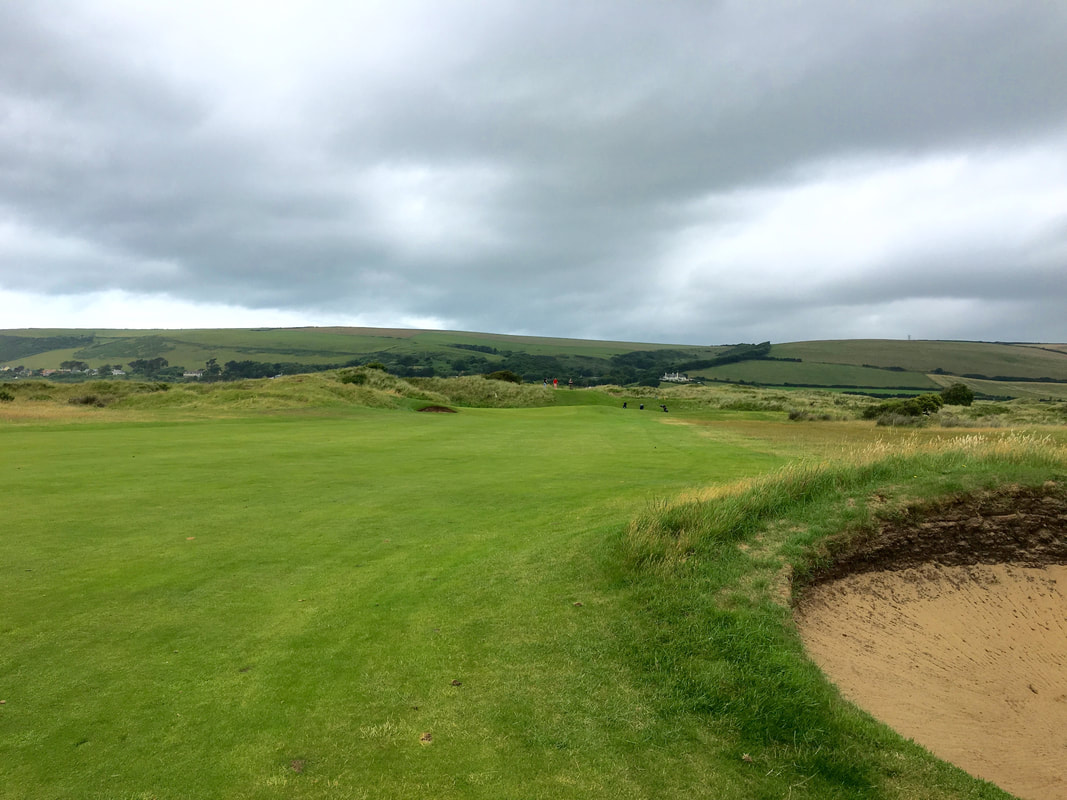
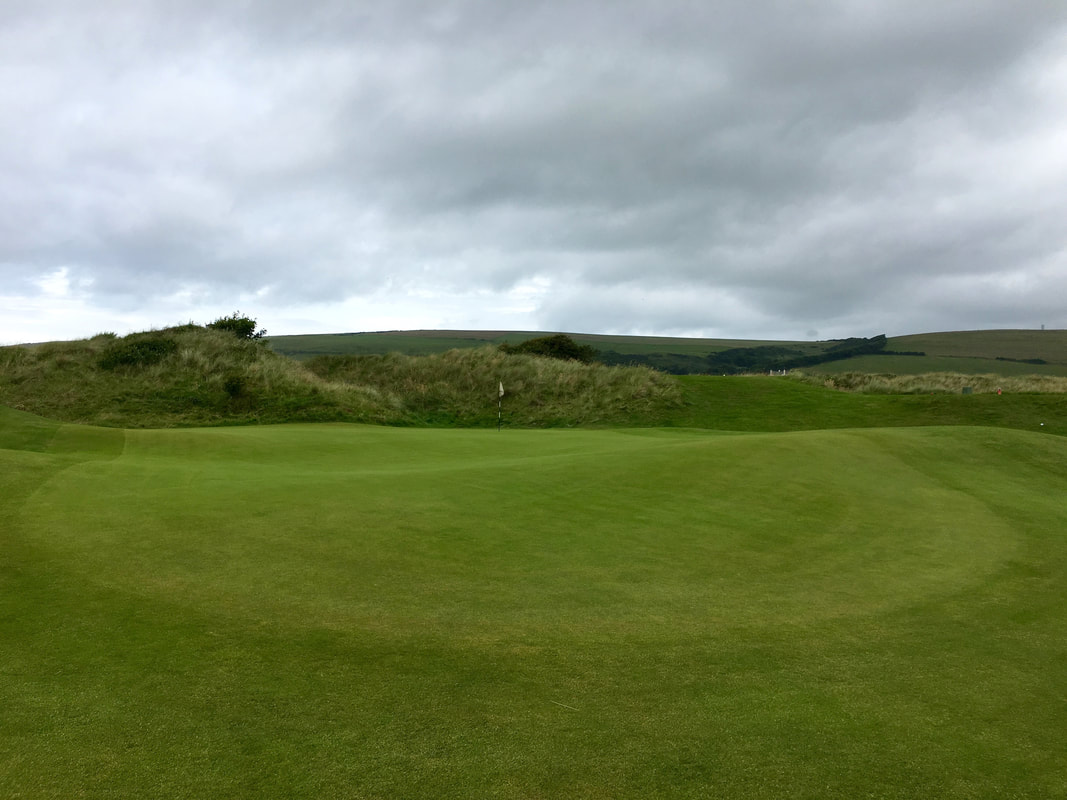
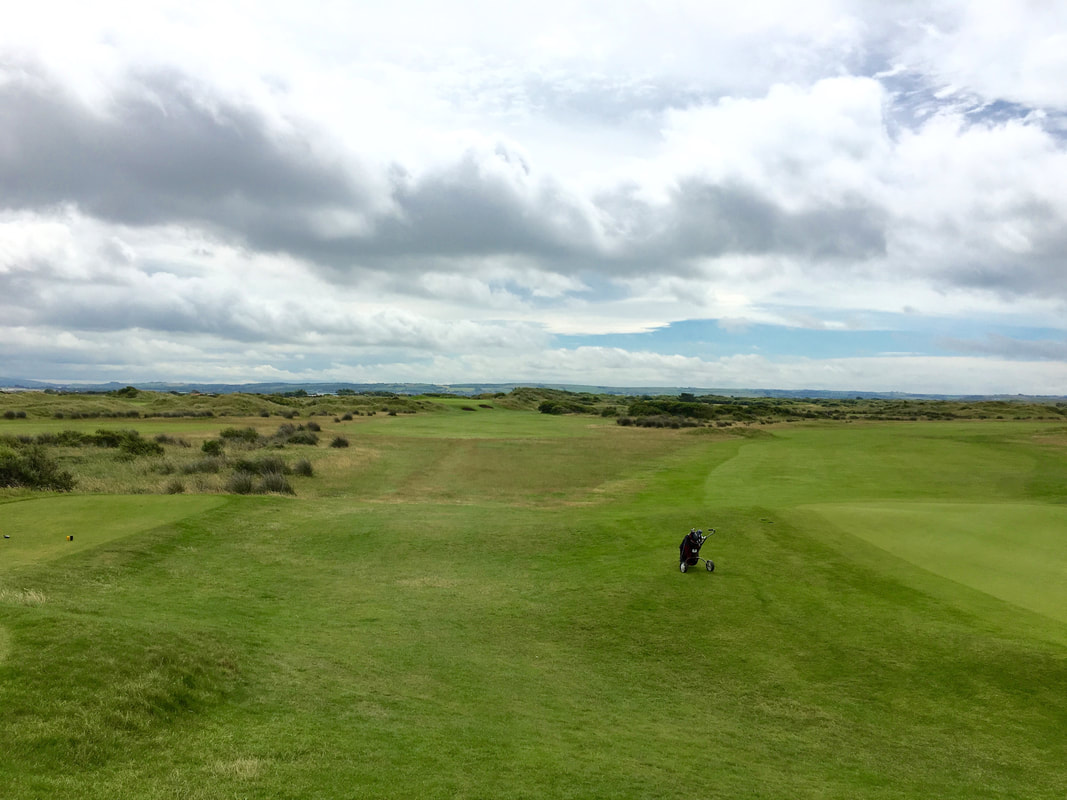
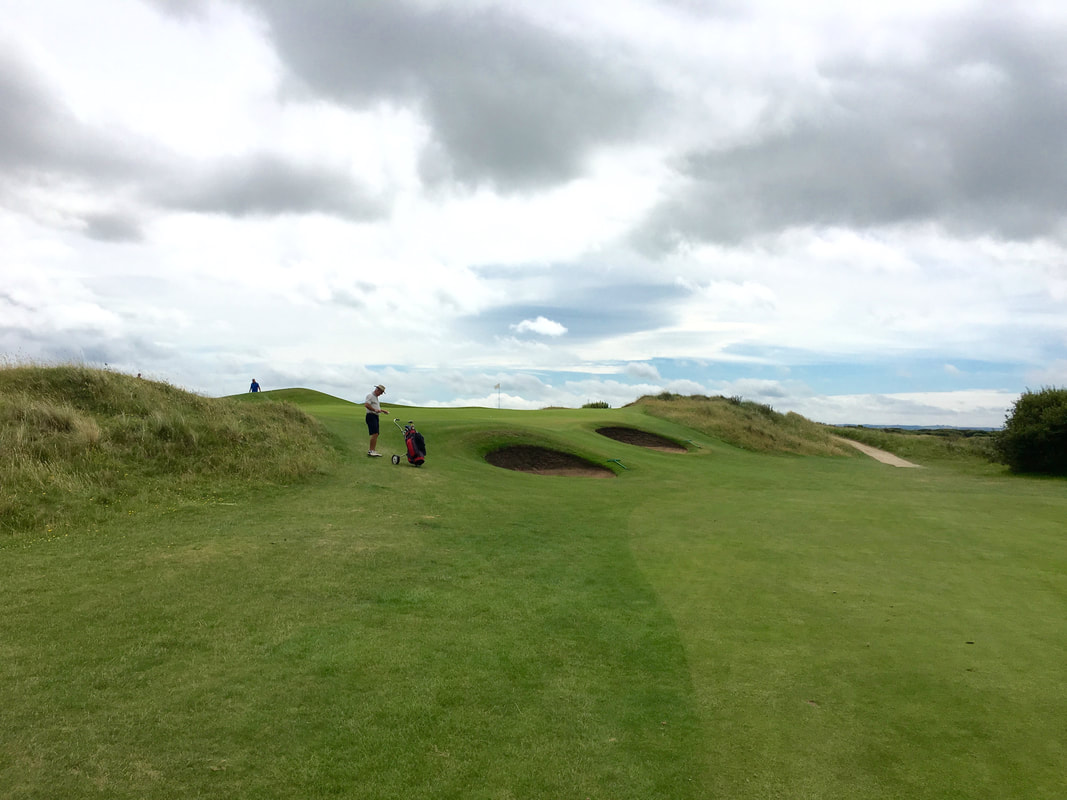
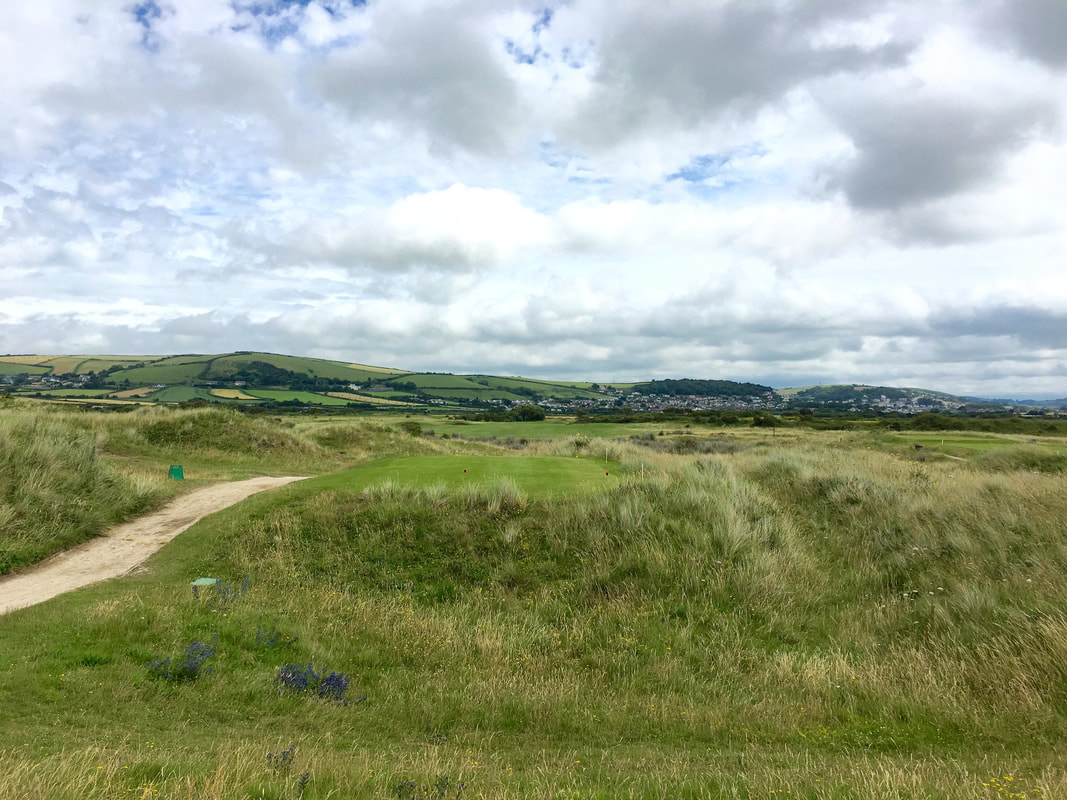
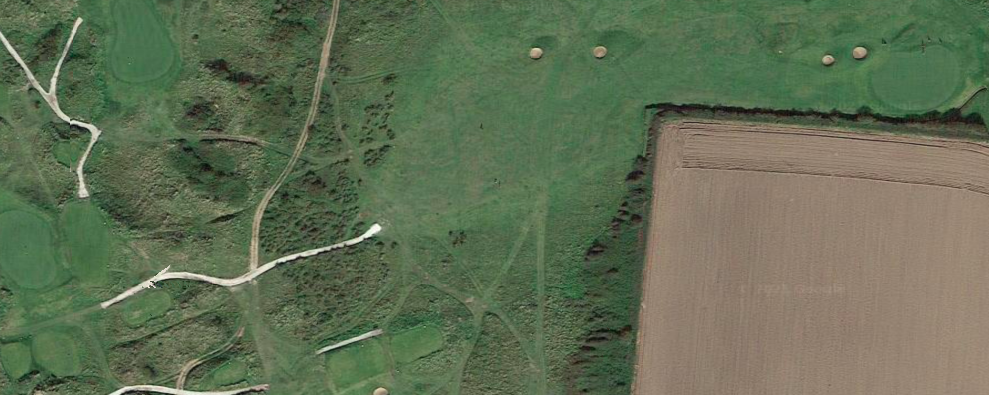
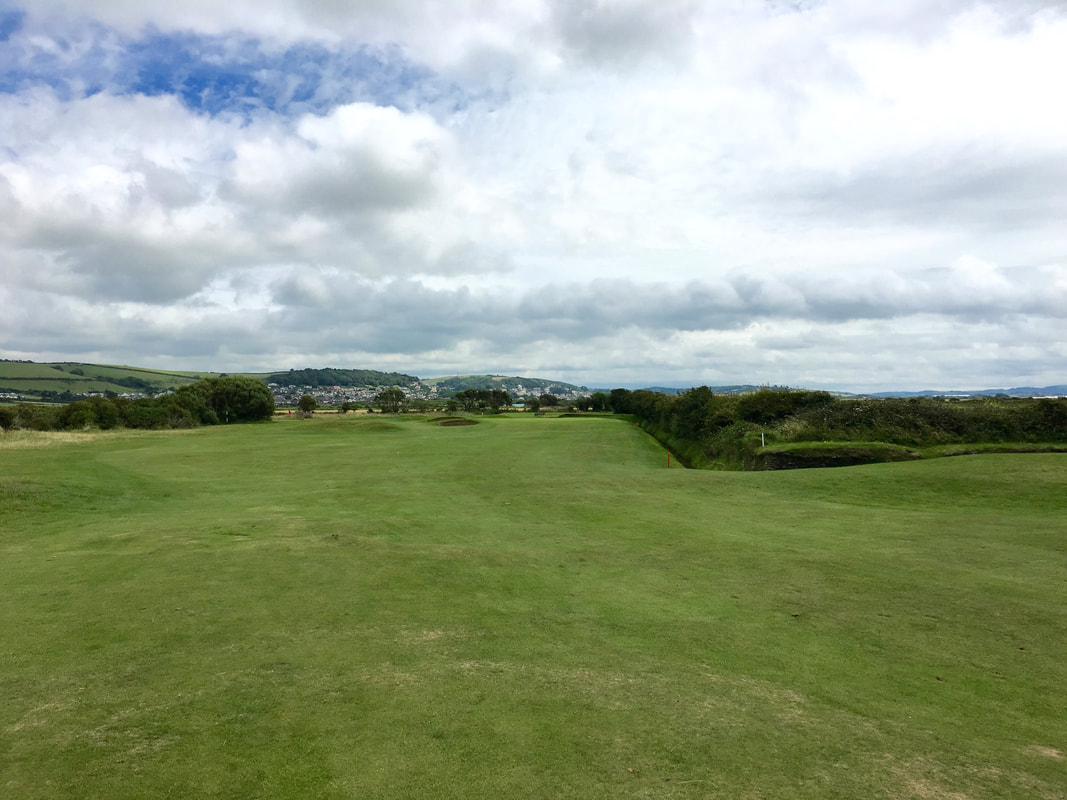
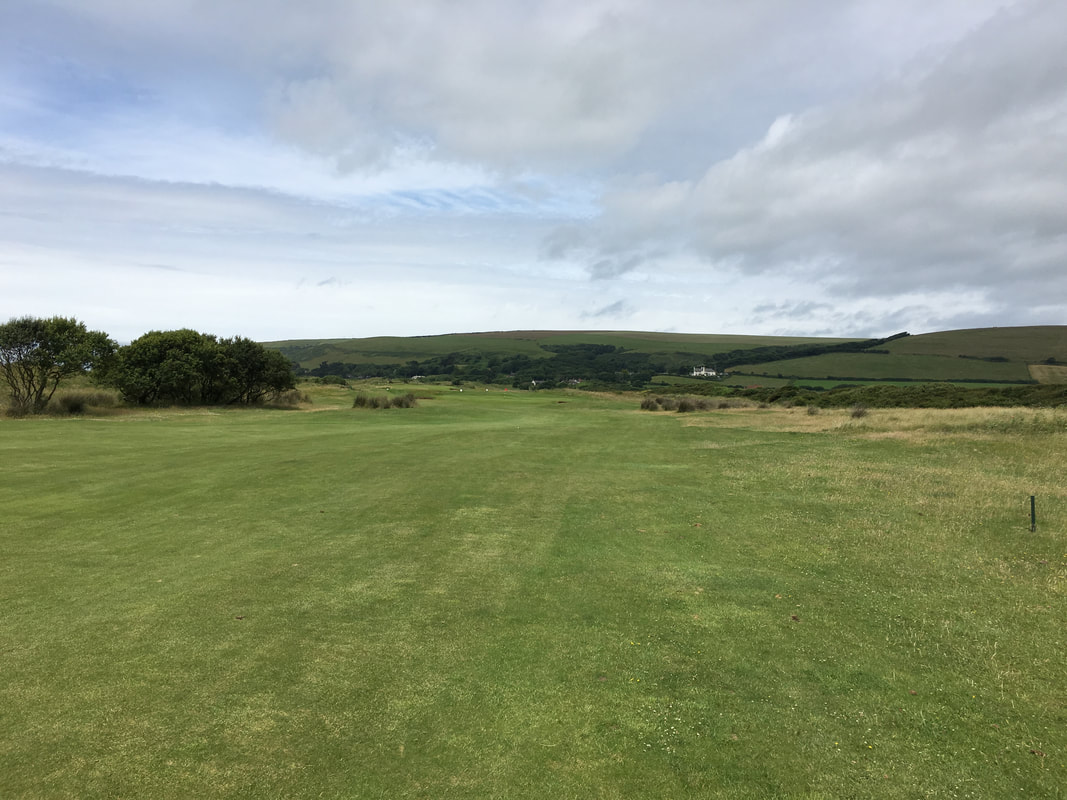
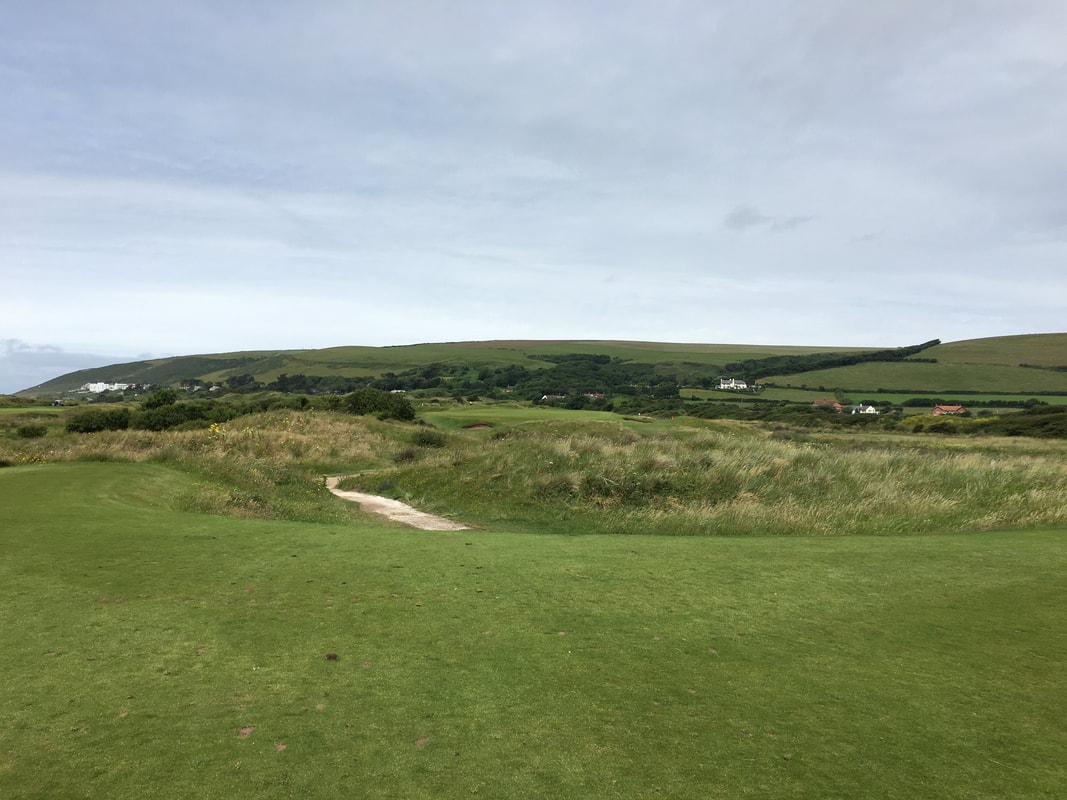
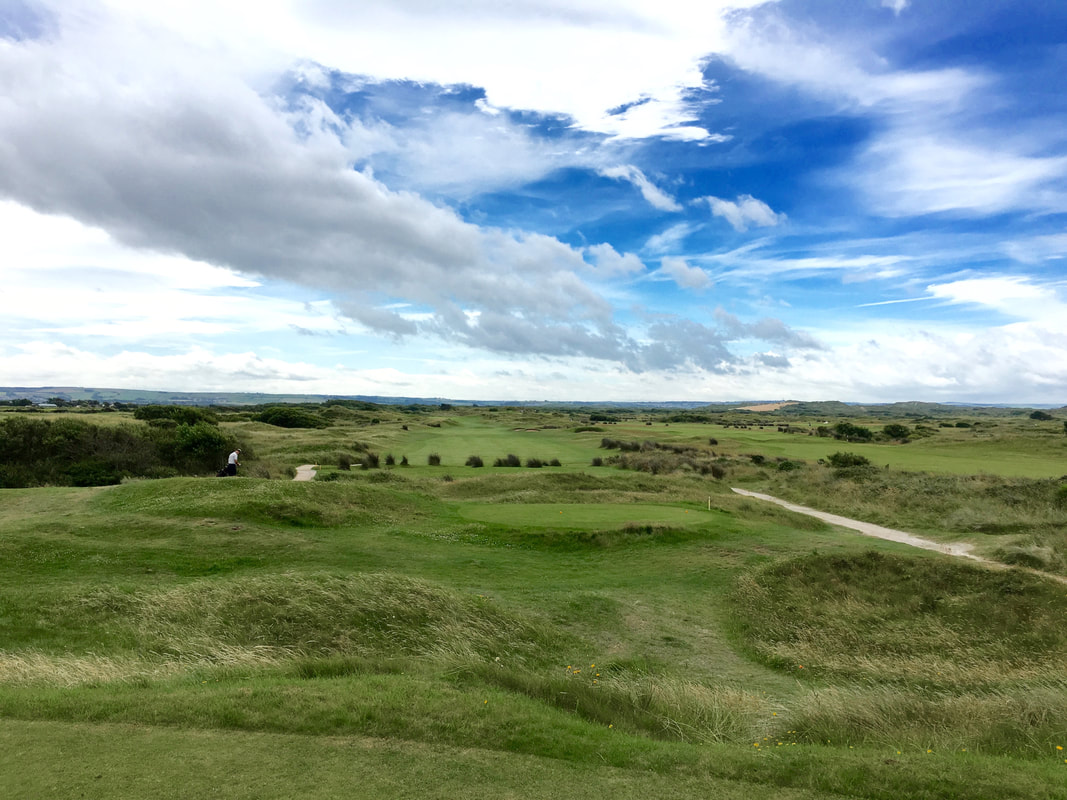
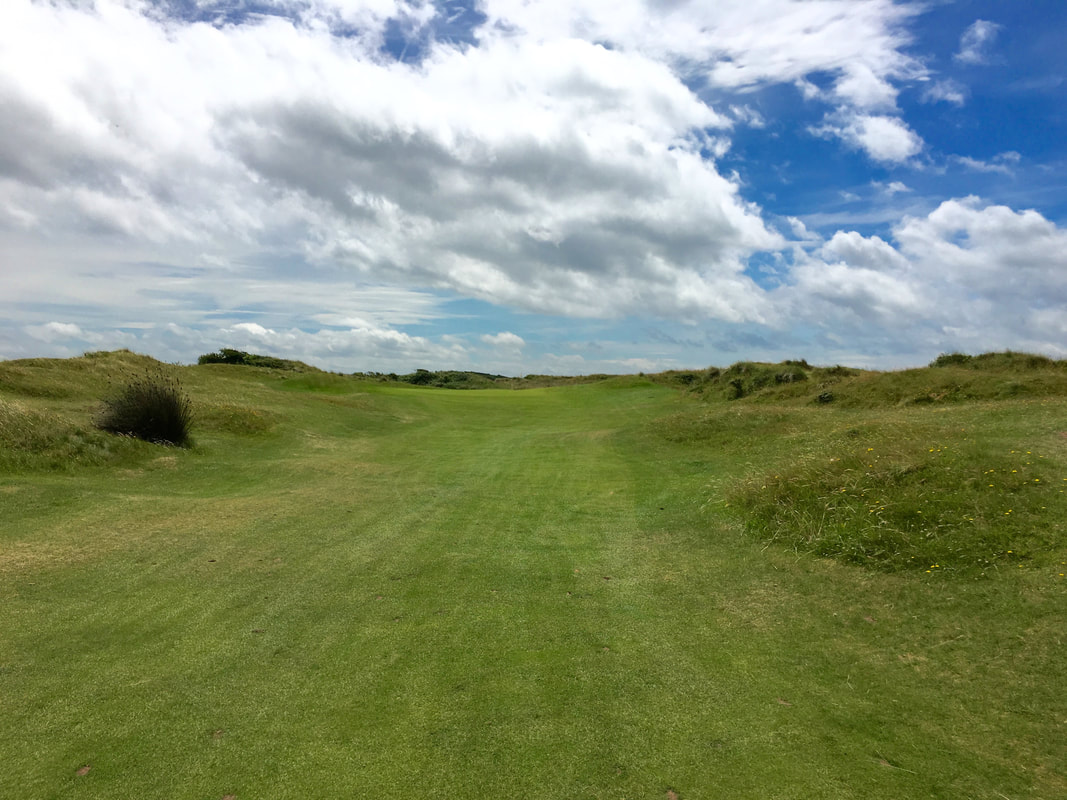
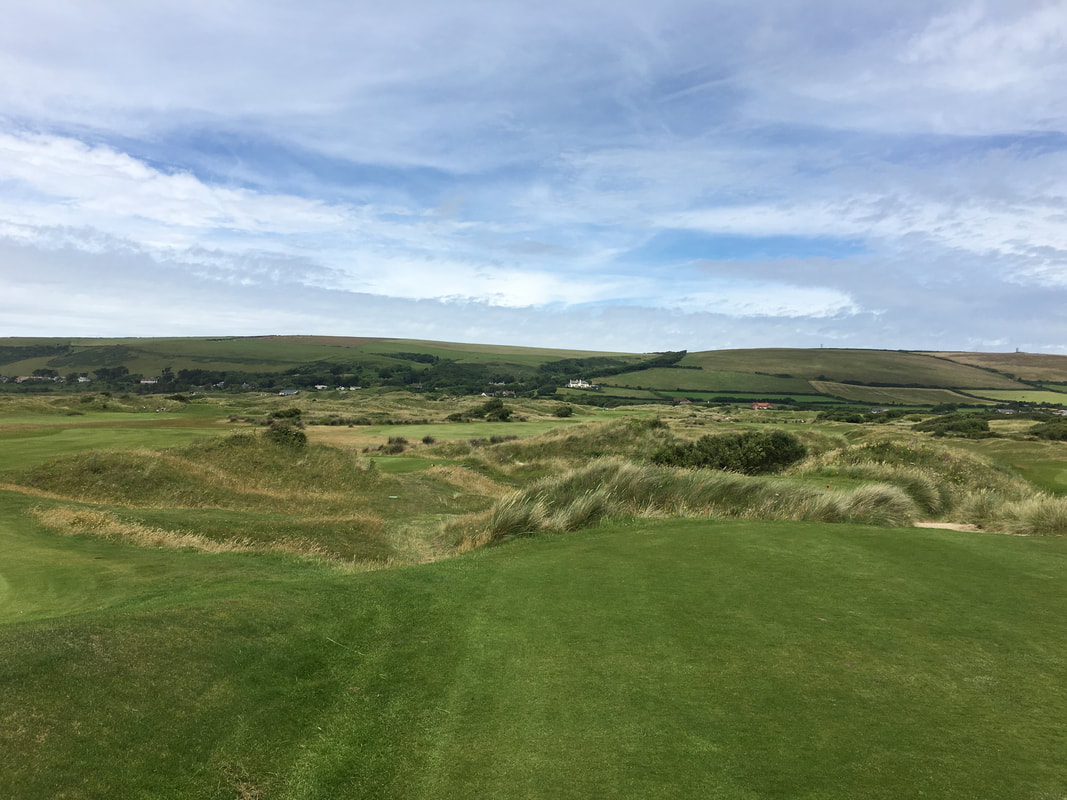
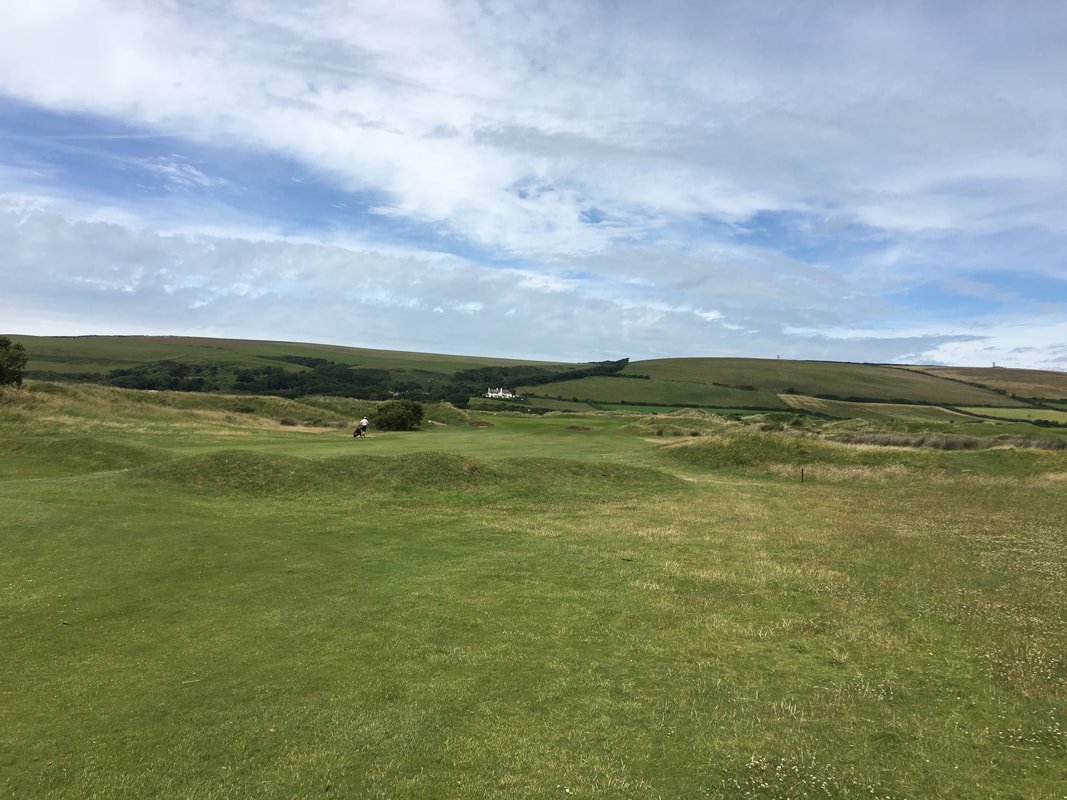
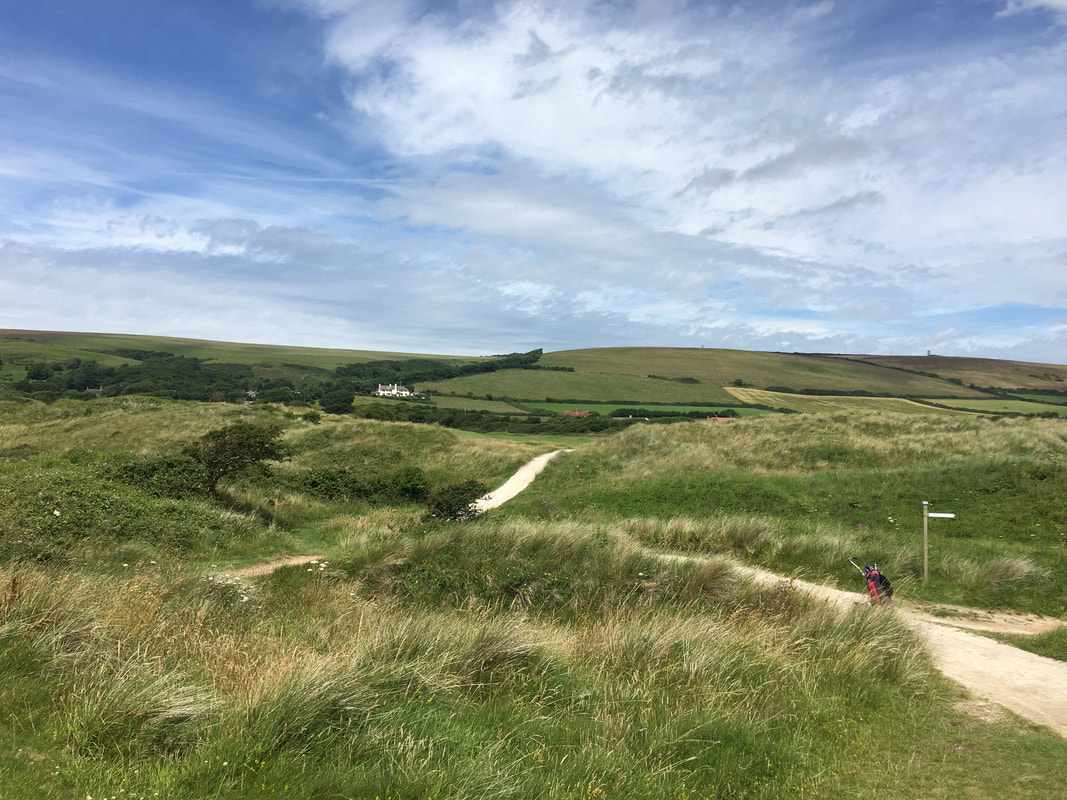
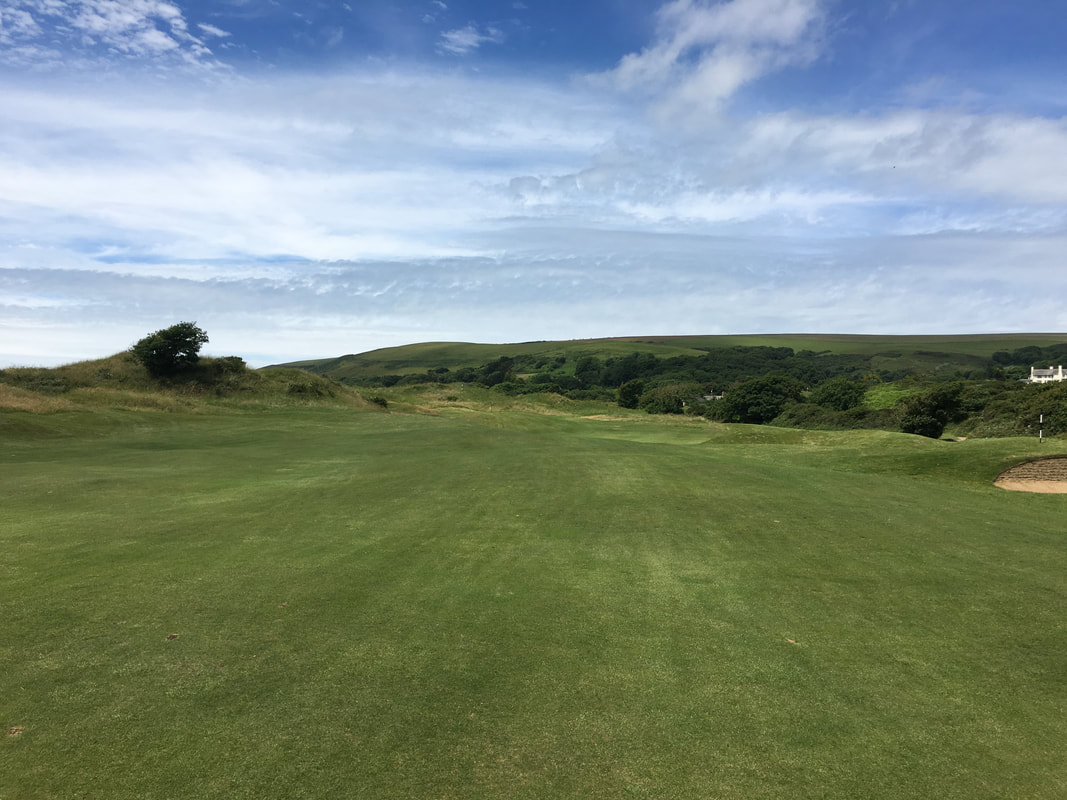
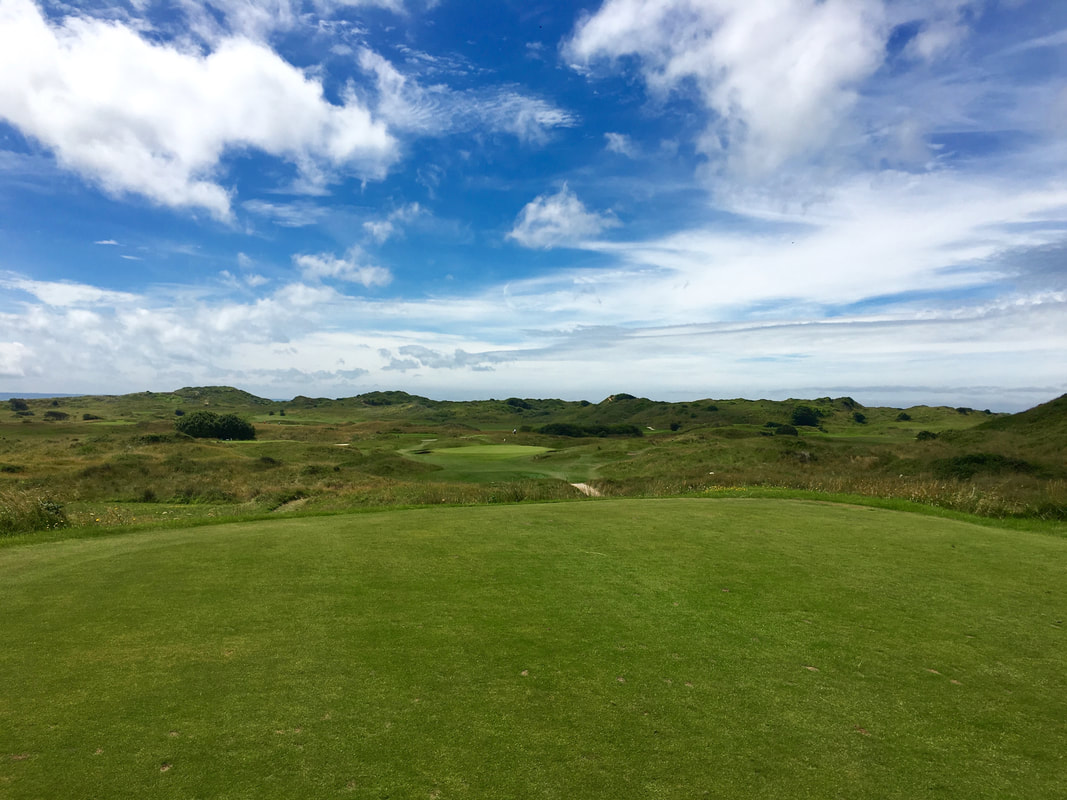
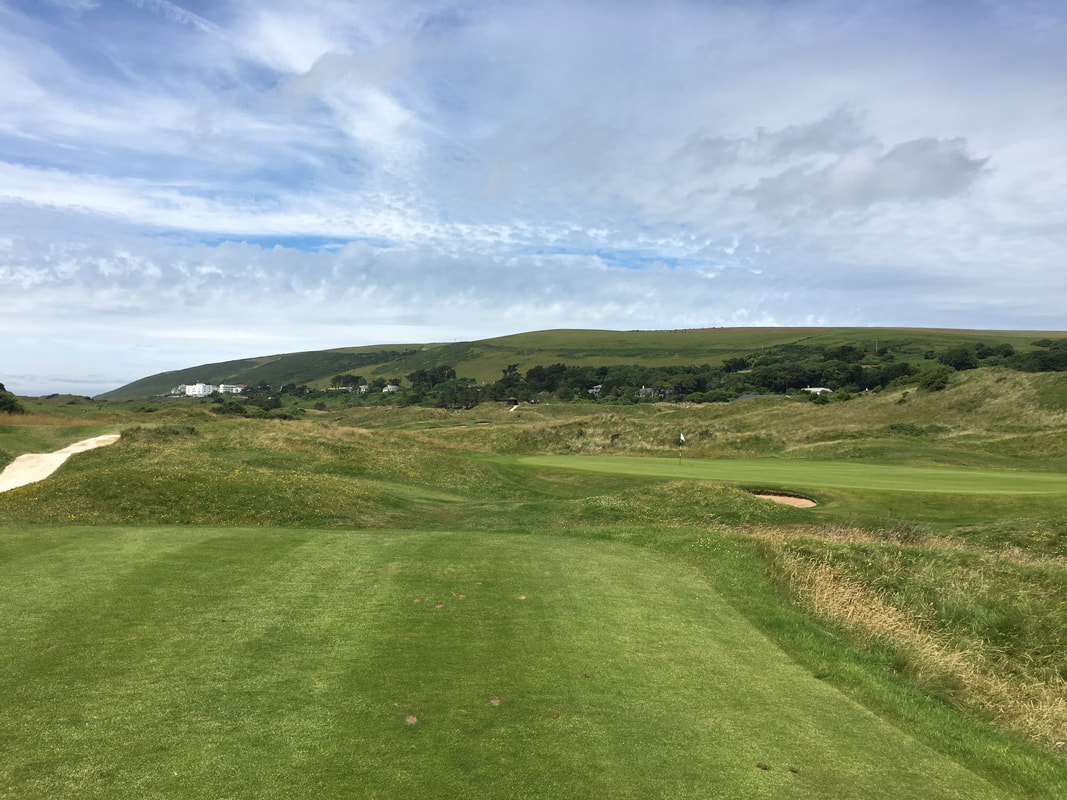
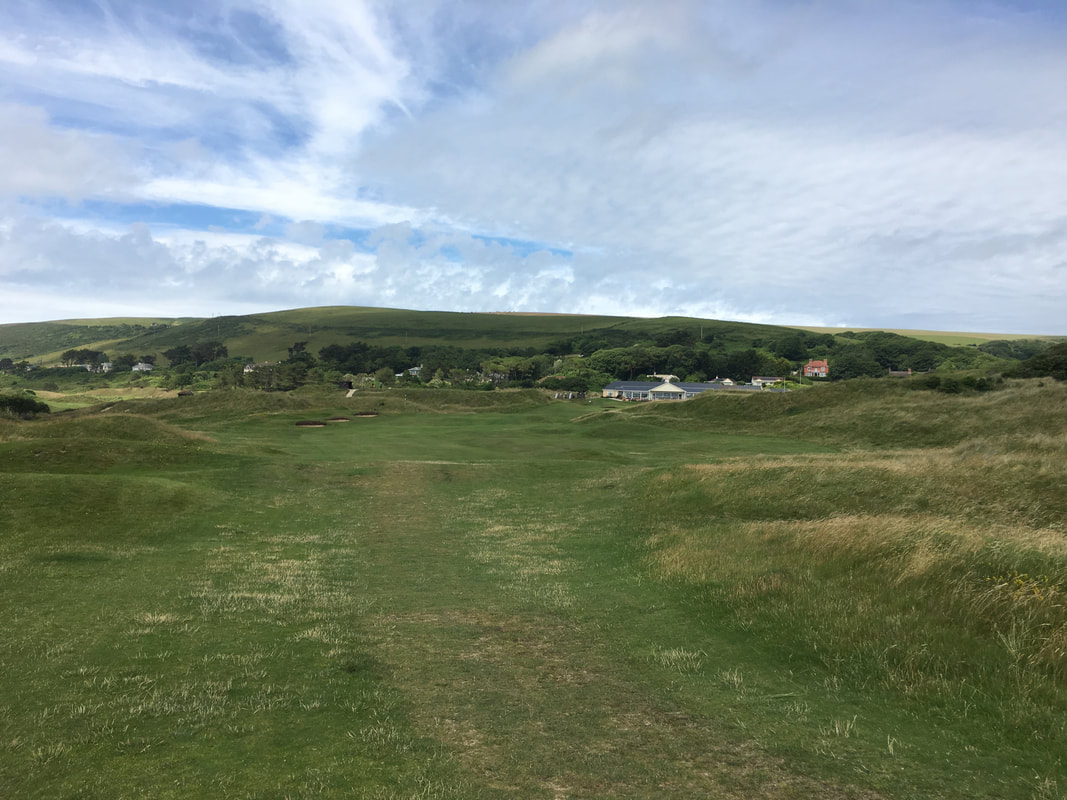
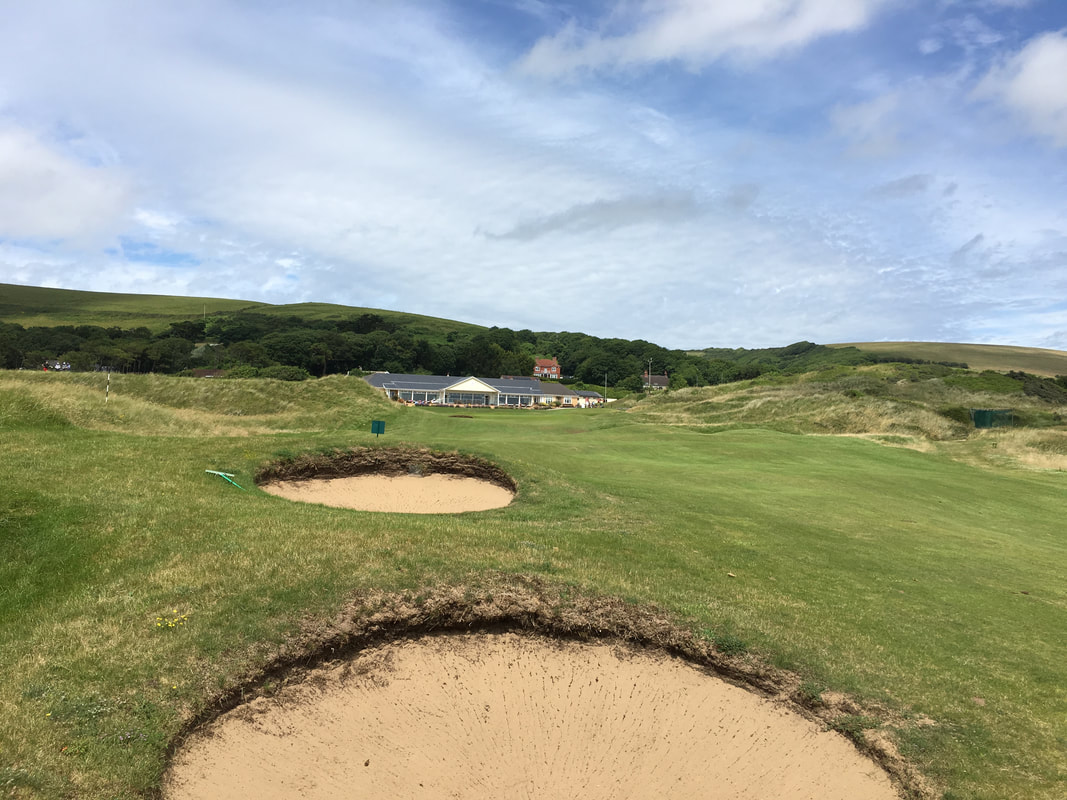
 RSS Feed
RSS Feed